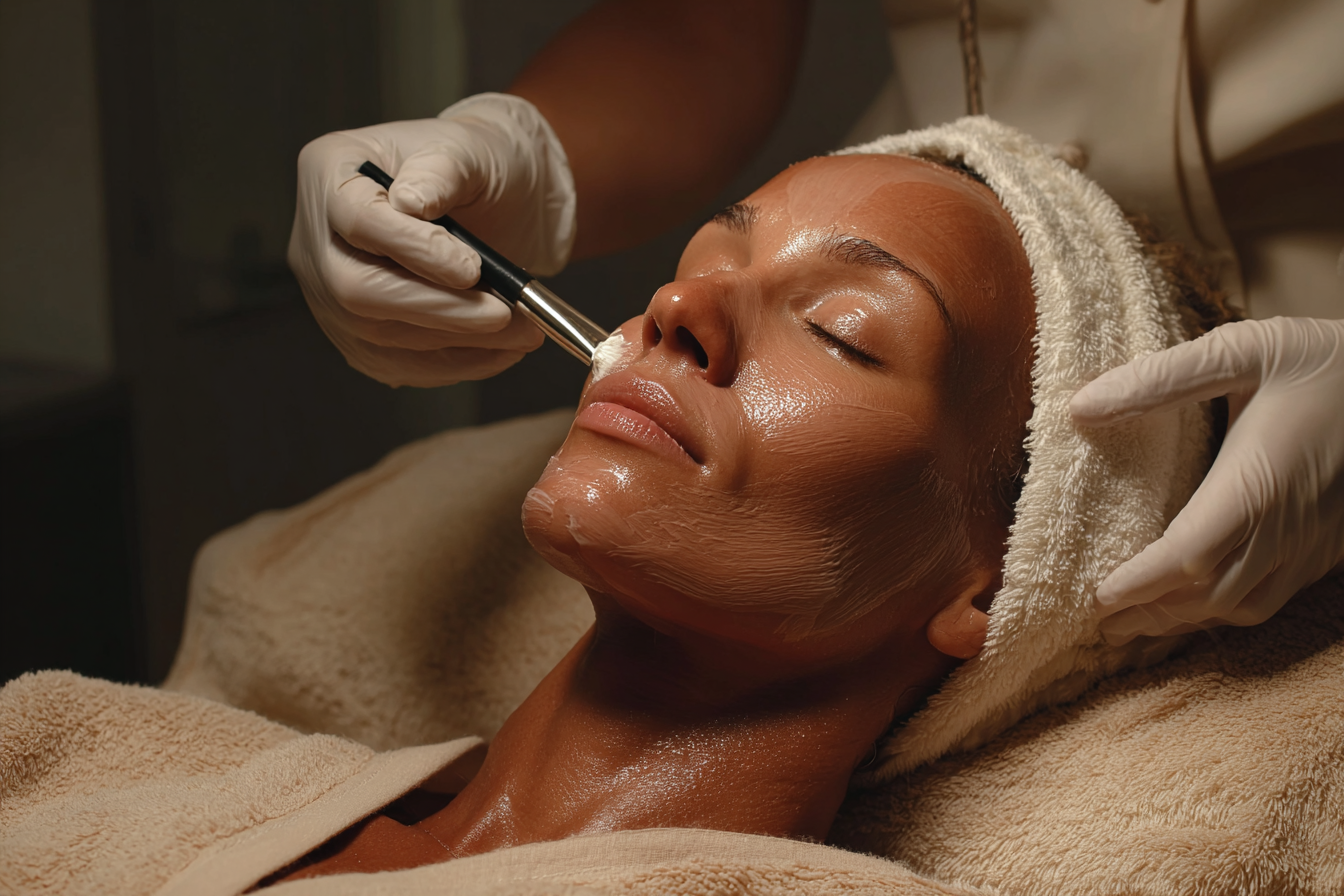Why Are Neutralisers Necessary in Peels?
Chemical peels deliberately cause injury to the skin to provoke a superior healing response. Yet, the discourse surrounding this cornerstone procedure is often muddled, particularly concerning the crucial final step of some peels, the neutralisation. A lack of clarity on when and why a peel must be stopped chemically has led to confusion, not only for the public but for practitioners as well. It is time to assert a clear, evidence-based stance. The necessity of a peel neutraliser is not a matter of opinion or technique; it is a chemical mandate.
First, we must dismantle the term "chemical peel" itself, for it is a misleading simplification. The procedure is not a simple peeling but a sophisticated act of controlled chemical injury. We are not merely wiping the slate clean; we are leveraging the body’s own powerful regenerative machinery. By inflicting a predictable wound, we stimulate a cascade of healing that results in healthier, smoother, and structurally superior skin. This reframes the act from a cosmetic nicety to a form of applied regenerative medicine. It is this concept of controlled injury that brings the importance of stopping the process into sharp focus. How we end the injury is as critical as how we begin it.
The versatility of this treatment lies in the precise control over the depth of this injury, which is categorised as light, medium, or deep. Light peels are confined to the epidermis, offering subtle results with minimal downtime, ideal for minor textural issues or uneven tone. Medium depth peels go further, reaching the papillary dermis to tackle more significant concerns like sun damage and superficial scars, but demand a more intensive recovery. Deep peels, the most aggressive form, extend into the reticular dermis to address severe wrinkles and photoaging, offering profound results at the cost of significant downtime and higher risks.
However, it is a fundamental error to believe that the depth of a peel is a fixed property of the chemical alone. The outcome is a complex interplay of the acid's concentration and pH, the practitioner's application technique, and the patient's unique skin characteristics. This elevates the chemical peel from a simple product to a dynamic procedure, where the practitioner's knowledge is as vital as the formulation itself. This inherent complexity exposes the grave dangers of at home peeling, where such critical variables are left uncontrolled and dangerously misunderstood.
A Tale of Two Mechanisms
To grasp why some peels demand neutralisation while others do not, one must understand the distinct chemical strategies of the agents themselves. They fall into two broad camps: those that disrupt the bonds holding skin cells together, and those that work by denaturing proteins, causing cellular destruction. This fundamental difference is the root cause of their differing termination protocols.
Glycolic acid, the best known alpha-hydroxy acid (AHA), works by dissolving the 'glue' between skin cells. Its small molecular size allows for rapid penetration, and its action is continuous for as long as it remains on the skin at an effective pH. The depth of injury is therefore a direct function of time. This time dependency is precisely why it must be terminated with an external neutralising agent. Without a chemical 'off switch', the acid would continue its descent into the skin, leading to an unpredictable and unsafe level of injury.
In stark contrast stands trichloroacetic acid (TCA), a protein denaturant. TCA does not merely unglue cells; it causes their proteins to coagulate and lose function, a process called coagulative necrosis. This is a far more aggressive mechanism, responsible for the dramatic results achievable with TCA peels.
Salicylic acid, a beta-hydroxy acid (BHA), has its own unique approach. Its oil soluble nature allows it to penetrate deep into the lipid rich environment of pores, making it exceptionally effective for acne. It works by disrupting the protein anchors between cells, a desmolytic action that causes exfoliation from within the pore.
Finally, blended formulations like Jessner’s solution combine multiple agents, such as salicylic acid and lactic acid, to create a synergistic effect. The combination allows it to act not only as a standalone peel but also as a penetration enhancer for other agents like TCA, achieving greater results with safer concentrations.
The Mandate for Neutralisation versus Self-Limitation
The controlled nature of a chemical peel is its defining feature. The ability to stop the chemical reaction is what separates a therapeutic procedure from an uncontrolled chemical burn. This termination is achieved through one of two pathways: external neutralisation or an inherent self-limiting mechanism. The choice is not optional; it is dictated by the agent's chemistry.
For time dependent peels like glycolic acid, external neutralisation is non negotiable. The process involves applying a weak base, typically a sodium bicarbonate solution, which rapidly raises the pH on the skin's surface. This converts the active acid molecules into their inactive form, halting their penetration. This chemical stop prevents the injury from becoming dangerously deep. To perform a glycolic acid peel without a neutraliser at hand is to court disaster.
On the other hand, a class of peels including TCA, salicylic acid, and Jessner's solution are self-limiting. Their chemical action is inherently finite. It is more accurate to describe these peels as 'self-neutralising' rather than 'un-neutralisable'. With TCA, the acid is effectively consumed by the very proteins it denatures, creating a physical barrier of coagulated tissue that blocks further penetration. For salicylic acid, the hydroalcoholic solution it is carried in evaporates upon contact with the warm skin, forcing the acid to crystallise. Once it becomes a solid, it is no longer active.
This creates two entirely different safety paradigms. With glycolic acid, control lies with the clock and the neutraliser bottle, offering the practitioner the ability to perform an 'emergency stop'. With TCA, control is predetermined by the concentration chosen. The depth is locked in upon application, making it predictable for an expert but unforgiving of error for the novice.
The Unseen Science of Formulation
To truly understand peel safety and efficacy, we must look beyond the active ingredient to the entire formulation. Comparing peels on acid percentage alone is a scientifically flawed oversimplification. The true potency of a peel is a function of its pH and the amount of 'free acid' available. A low pH formulation is far more aggressive than a high pH one with the same acid concentration. This is why the 'Free Acid Value' is a much more honest measure of a peel's strength than a simple percentage.
Furthermore, the vehicle that carries the acid, be it a gel or a liquid solution, fundamentally alters its behaviour. Gel formulations offer a slower, more controlled release, which is often better tolerated. Conversely, a hydroalcoholic solution allows for rapid penetration and is integral to the self-limiting mechanism of agents like salicylic acid, where the evaporation of the alcohol triggers its crystallisation.
The debate over the necessity of peel neutralisers can be settled with chemical certainty. The answer is not a matter of preference but of scientific fact.
For time dependent peels such as glycolic acid and other AHAs, neutralisers are an absolute and essential requirement. Their action is continuous, and the neutraliser is the sole mechanism that provides a controlled and predictable endpoint.
For self-limiting peels like TCA and salicylic acid, an external neutraliser is chemically redundant. The 'stop' mechanism is elegantly built into their very interaction with the skin, whether through protein coagulation or crystallisation.
Ultimately, the safety of any chemical peel does not rest on this single question. It depends on a holistic, systematic approach grounded in a deep understanding of dermatological chemistry. This includes correct patient diagnosis, prudent selection of the peeling agent, meticulous application, and diligent post procedure care. A failure at any point in this chain can lead to complications. Yet, the starting point of this expertise must be the acknowledgement of a simple chemical truth: for some peels, the neutraliser is not an accessory; it is the entire control system.









